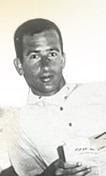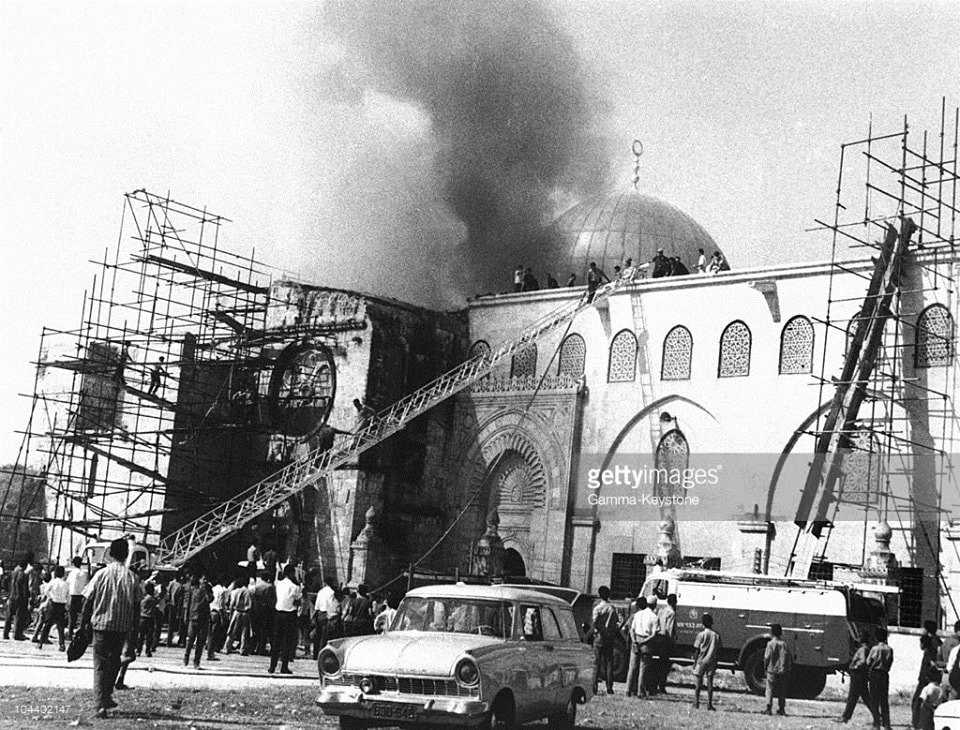22 aug 2019

The Arab League has called on the international community to necessarily shoulder its responsibility towards Palestine and provide protection for the Aqsa Mosque against Israel’s aggression.
In a statement, Sa’eid Abu Ali, Arab League assistant secretary-general for Palestine affairs and occupied Arab territories, stressed the urgent need to enforce rules of international law and relevant UN resolutions in order to put an end to Israel’s disregard for international legitimacy and justice.
Abu Ali noted that the continued absence of international justice would encourage the Israeli occupation to persist in its crimes and kill any chance to achieve just peace in the region.
Recalling the Israeli arson attack on the Aqsa Mosque that happened 50 years ago, the Arab League official said that this Israeli crime continues to take place and target the rights and holy sites of the Palestinian people and the Arab and Muslim nations, with support from the US administration.
In a statement, Sa’eid Abu Ali, Arab League assistant secretary-general for Palestine affairs and occupied Arab territories, stressed the urgent need to enforce rules of international law and relevant UN resolutions in order to put an end to Israel’s disregard for international legitimacy and justice.
Abu Ali noted that the continued absence of international justice would encourage the Israeli occupation to persist in its crimes and kill any chance to achieve just peace in the region.
Recalling the Israeli arson attack on the Aqsa Mosque that happened 50 years ago, the Arab League official said that this Israeli crime continues to take place and target the rights and holy sites of the Palestinian people and the Arab and Muslim nations, with support from the US administration.
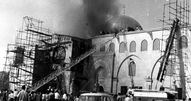
The Islamic Resistance Movement, Hamas, on Wednesday said that the Islamic identity of al-Aqsa Mosque is one of the constants of history that will not be changed by the Israeli occupation's attempts to impose a new reality in the holy mosque and its surroundings in Jerusalem City.
In an official statement on the 50th anniversary of the arson attack on al-Aqsa Mosque, Hamas hailed the Palestinian people in Jerusalem who defend al-Aqsa Mosque against settler attacks and Judaization attempts with all their might despite the systematic harassment they are subjected to, including displacement, home demolition, arrest and land seizure.
Hamas said that the latest home demolition campaigns waged against the Palestinians in Jerusalem is only a new step toward altering the demographic character of the holy city.
Hamas called on the Palestinian people in the West Bank, Gaza Strip, Jerusalem, the 1948 occupied territories, and the diaspora to stay strong, adhere to their national constants, and not to give up their rights.
The Islamic movement called for mass demonstrations on Friday in support of the people of Jerusalem.
It also appealed to the Organization of Islamic Cooperation, which was founded in response to the arson attack on al-Aqsa Mosque, to assume its responsibility toward the holy site and support the Palestinian people in Jerusalem by all possible means.
In an official statement on the 50th anniversary of the arson attack on al-Aqsa Mosque, Hamas hailed the Palestinian people in Jerusalem who defend al-Aqsa Mosque against settler attacks and Judaization attempts with all their might despite the systematic harassment they are subjected to, including displacement, home demolition, arrest and land seizure.
Hamas said that the latest home demolition campaigns waged against the Palestinians in Jerusalem is only a new step toward altering the demographic character of the holy city.
Hamas called on the Palestinian people in the West Bank, Gaza Strip, Jerusalem, the 1948 occupied territories, and the diaspora to stay strong, adhere to their national constants, and not to give up their rights.
The Islamic movement called for mass demonstrations on Friday in support of the people of Jerusalem.
It also appealed to the Organization of Islamic Cooperation, which was founded in response to the arson attack on al-Aqsa Mosque, to assume its responsibility toward the holy site and support the Palestinian people in Jerusalem by all possible means.
21 aug 2019
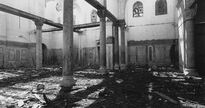
As half a century has passed since the attempt by Jewish extremist Michael Dennis Rohan to burn down the Aqsa Mosque, the flames are still engulfing the Islamic holy site.
On the eve of this painful anniversary, which is commemorated on August 21, the flames were raging at the Aqsa Mosque, which is still exposed to daily violations against its Islamic sanctity by Israeli forces and settlers.
The Israeli occupation police recently escalated their aggression against the Aqsa Mosque through assaulting Muslim worshipers, Aqsa employees and Islamic Awqaf officials, and banning entry of many of them to the holy site.
The latest Israeli assaults at the Aqsa Mosque happened on the first day of Eid al-Adha, August 11, when police forces brutally attacked Muslim worshipers following the Eid prayers and allowed dozens of Jewish settlers to defile its courtyards.
In remarks on this anniversary, Hanna Issa, head of the Islamic Christian Authority for Patronizing Jerusalem and Holy Sites, said the fires at the Aqsa Mosque did not start on August 21, 1969, but when the Israeli occupation forces invaded east Jerusalem on July 7, 1967 and destroyed al-Maghariba neighborhood.
Issa affirmed that the Islamic and Christian holy sites in Jerusalem, especially the Aqsa Mosque and the Church of the Holy Sepulcher, had since faced many fires, adding that the entire world did not recognize Israel’s occupation of west Jerusalem in 1948 and its occupation of east Jerusalem in 1967.
“Israel has persisted in its violations against the Aqsa Mosque and the holy city since 1967 and worked on Judaizing 97 percent of Jerusalem,” the head of the Islamic-Christian Authority said.
He noted that the Israeli attacks on the Aqsa Mosque increased when US president Donald Trump took office in 2017 and later declared Jerusalem a Jewish city, adding that Trump does not recognize the Christian, Islamic and Arab presence in the holy city.
He pointed to the presence of 105 synagogues around the Aqsa Mosque and a network of tunnels and an entire city built by Israel beneath and around it.
Issa also outlined Israel’s efforts to Judaize the holy city through seizing lands and property in the Old City, expanding the area of al-Buraq wall (western wall), revoking IDs of many Jerusalemite citizens, refusing to register 22,000 children as Jerusalemite citizens, and carrying out mass home demolitions.
He also warned of Israeli intents to enact laws aimed at dividing the Aqsa Mosque temporally and spatially as part of a comprehensive plan to obliterate the Arab Islamic-Christian identity of Jerusalem and giving it a new Jewish character.
For his part, Sheikh Ikrima Sabri, head of the Higher Islamic Commission and Aqsa Mosque preacher, described Israel’s repeated violations at the Aqsa Mosque as “fires encircling it from all sides,” adding that the daily Israeli break-ins at the Mosque, the underground excavations and the separation wall surrounding Jerusalem are part of these fires.
The 1969 fire had destroyed nearly one third of the al-Qibli Mosque with the grey dome, including the ancient wood and ivory pulpit that was brought by conqueror Salahuddin al-Ayyubi from the Syrian city of Aleppo.
The blaze also destroyed the mihrab (prayer niche) of Muslim caliph Omar bin al-Khattab, as well as the decorated interior and the gilded wooden dome.
On the eve of this painful anniversary, which is commemorated on August 21, the flames were raging at the Aqsa Mosque, which is still exposed to daily violations against its Islamic sanctity by Israeli forces and settlers.
The Israeli occupation police recently escalated their aggression against the Aqsa Mosque through assaulting Muslim worshipers, Aqsa employees and Islamic Awqaf officials, and banning entry of many of them to the holy site.
The latest Israeli assaults at the Aqsa Mosque happened on the first day of Eid al-Adha, August 11, when police forces brutally attacked Muslim worshipers following the Eid prayers and allowed dozens of Jewish settlers to defile its courtyards.
In remarks on this anniversary, Hanna Issa, head of the Islamic Christian Authority for Patronizing Jerusalem and Holy Sites, said the fires at the Aqsa Mosque did not start on August 21, 1969, but when the Israeli occupation forces invaded east Jerusalem on July 7, 1967 and destroyed al-Maghariba neighborhood.
Issa affirmed that the Islamic and Christian holy sites in Jerusalem, especially the Aqsa Mosque and the Church of the Holy Sepulcher, had since faced many fires, adding that the entire world did not recognize Israel’s occupation of west Jerusalem in 1948 and its occupation of east Jerusalem in 1967.
“Israel has persisted in its violations against the Aqsa Mosque and the holy city since 1967 and worked on Judaizing 97 percent of Jerusalem,” the head of the Islamic-Christian Authority said.
He noted that the Israeli attacks on the Aqsa Mosque increased when US president Donald Trump took office in 2017 and later declared Jerusalem a Jewish city, adding that Trump does not recognize the Christian, Islamic and Arab presence in the holy city.
He pointed to the presence of 105 synagogues around the Aqsa Mosque and a network of tunnels and an entire city built by Israel beneath and around it.
Issa also outlined Israel’s efforts to Judaize the holy city through seizing lands and property in the Old City, expanding the area of al-Buraq wall (western wall), revoking IDs of many Jerusalemite citizens, refusing to register 22,000 children as Jerusalemite citizens, and carrying out mass home demolitions.
He also warned of Israeli intents to enact laws aimed at dividing the Aqsa Mosque temporally and spatially as part of a comprehensive plan to obliterate the Arab Islamic-Christian identity of Jerusalem and giving it a new Jewish character.
For his part, Sheikh Ikrima Sabri, head of the Higher Islamic Commission and Aqsa Mosque preacher, described Israel’s repeated violations at the Aqsa Mosque as “fires encircling it from all sides,” adding that the daily Israeli break-ins at the Mosque, the underground excavations and the separation wall surrounding Jerusalem are part of these fires.
The 1969 fire had destroyed nearly one third of the al-Qibli Mosque with the grey dome, including the ancient wood and ivory pulpit that was brought by conqueror Salahuddin al-Ayyubi from the Syrian city of Aleppo.
The blaze also destroyed the mihrab (prayer niche) of Muslim caliph Omar bin al-Khattab, as well as the decorated interior and the gilded wooden dome.
21 aug 2017
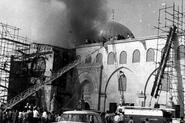
Al Aqsa Mosque burning after arsonist Denis Michael Rohan started a fire in 21 August, 1969
On 21 August, 1969, an extremist Australian Christian, Dennis Michael Rohan, attempted to set fire to Al-Aqsa Mosque; his action had the apparent blessing of the Israeli occupation forces. Some 48 years later, the Noble Sanctuary of Al-Aqsa remains under as great a threat as ever.
What: Arson attack
Where: Al-Aqsa Mosque, Jerusalem
When: 21 August 1969
What happened?
On 21 August, 1969, an extremist Australian Christian, Dennis Michael Rohan, attempted to set fire to Al-Aqsa Mosque; his action had the apparent blessing of the Israeli occupation forces. Some 48 years later, the Noble Sanctuary of Al-Aqsa remains under as great a threat as ever.
What: Arson attack
Where: Al-Aqsa Mosque, Jerusalem
When: 21 August 1969
What happened?
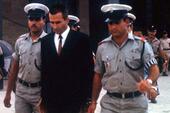
Heavily guarded by police, Australian born Denis Michael Rohan leaves court where he is on trial accused of setting fire to the Ancient Al-Aqsa Mosque on 21 August, 1969
It was early on Thursday morning when the alarm was sounded. Palestinian guards in the Aqsa compound saw smoke rising from the south-east wing of the mosque and, upon closer inspection, saw a blaze inside the prayer hall.
Muslims and Christians alike rushed to the mosque to quell the flames, but Israeli occupation forces prevented their entry.
After short but fierce clashes, they made their way into the Noble Sanctuary and started to tackle the fire. After the fire extinguishers failed to work, they looked for sources of water but found the pumps broken and the hoses cut. They banded together quickly to form a human chain and used buckets and other small containers to bring water to the building.
As fire trucks from the surrounding West Bank cities of Nablus, Ramallah, Al-Bireh, Bethlehem, Hebron, Jenin and Tulkarem arrived, the Israeli occupation forces also prevented them from reaching the scene, claiming that it was the Jerusalem Municipality’s responsibility to handle the situation.
The fire burned for hours with flames reaching the windows just below the dome, before the blaze was finally extinguished.
As the smoke cleared, the extent of the damage was made known. The fire had swept through some of the oldest parts of the mosque, most notably destroying the 900-year-old wood and ivory pulpit gifted by Salahuddin Al-Ayubi, as well as mosaic panels on the walls and ceilings; many areas within the mosque were left blackened and burnt.
As the news of the inferno spread, heated demonstrations took place throughout the city. The whole of occupied Jerusalem went on strike, a move that was emulated across the West Bank and even in the Israeli territories. In reaction, all access points to the mosque were blocked by Israeli security forces, such that Friday prayers the next day were not held in the compound for the first time.
A suspect was soon identified; Dennis Michael Rohan, an Australian Christian tourist, who was arrested on 23 August. Rohan was unafraid of revealing his motives for the crime; as “the Lord’s emissary”, he wanted to hasten the second coming of Jesus Christ which, in his view, could only be achieved by allowing the Jews to build a temple in place of Al-Aqsa Mosque, where it is claimed that the Temple of Solomon originally stood.
Whilst Rohan was declared to be insane and hospitalised in a mental institution, others were sceptical about him being the only culprit. On the 28 August, 24 Muslim-majority nations submitted a complaint to the UN Security Council in which Jordanian Ambassador to the UN, Mohamed El-Farra stated:
“According to news that originated from Israeli sources, the Australian suspect is a friend of Israel who was brought by the Jewish Agency to work for Israel.
The Jewish Agency arranged for the Australian to work in a Kibbutz for some months, so that he could learn the Hebrew language and acquire more of the Zionist teaching… the life of this Australian in the Kibbutz and his dreams of building Solomon’s temple casts doubt on the case and adds to the fears and worries of the Muslims about their holy shrines; it also throws light on who is the criminal and who is the accomplice.”
The letter referred to numerous comments made in previous years by Israeli officials who vowed to establish the Temple of Solomon on the site of Al-Aqsa Mosque. The continuing Israeli aggression towards Palestinians was also addressed in light of the occupation of the West Bank and East Jerusalem two years previously after the 1967 war.
The UN responded by condemning the attack and called on Israel to void all arrangements that would alter the status of Jerusalem. Israel ignored this resolution, as it has done with all such calls before and after.
The suspicions that Israel was actively involved in planning and facilitating the arson attempt have never been disproved. Many also see the normalisation of Zionist intimidation, including Israel’s attempts to eradicate Palestinian heritage in the region, as the ultimate source of the mentality that led to this attack, and all others since.
What happened next?
This year, the anniversary of this event comes just weeks after Al-Aqsa was once again threatened and its sanctity violated.
After a deadly shootout on 14 July, Israeli occupying forces closed the mosque for the first time since the 1969 arson attack, and had installed metal detectors and CCTV cameras in the compound when it reopened.
This led to widespread protests as Israel was accused of violating the status quo by imposing such unnecessary security measures.
Palestinian worshippers staged a sit-in outside the compound wall in protest, and clashes with the military over two weeks left six dead and thousands injured.
After 11 days of outrage and demonstrations, Israel relented and removed all of the offensive and intrusive measures.
Palestinians rejoiced as they entered the mosque, but such an incident serves as a reminder of how aggression against Al-Aqsa has never ended. To this day, the mosque remains a symbol of the ongoing violations of the most basic rights of Palestinians, including their ability to worship freely.
Similarly, the inaction of fellow Arab states in response to such attacks has remained constant. They wrote letters of condemnation in 1969, yet nearly 50 years later Al-Aqsa is regularly stormed by Jewish settlers and armed security forces, worshippers are turned away at the gates and the foundations of the structure are being destroyed by tunnelling.
Jordan paid for the reconstruction of the fire-damaged mosque, but whilst Al-Aqsa was under siege in July, the government in Amman prioritised the return of an Israeli gunman to Tel Aviv at the request of the US.
In remembering the arson attack on Al-Aqsa Mosque it is clear that the Noble Sanctuary faces the same threats as it did 48 years ago, perhaps even more so.
It was early on Thursday morning when the alarm was sounded. Palestinian guards in the Aqsa compound saw smoke rising from the south-east wing of the mosque and, upon closer inspection, saw a blaze inside the prayer hall.
Muslims and Christians alike rushed to the mosque to quell the flames, but Israeli occupation forces prevented their entry.
After short but fierce clashes, they made their way into the Noble Sanctuary and started to tackle the fire. After the fire extinguishers failed to work, they looked for sources of water but found the pumps broken and the hoses cut. They banded together quickly to form a human chain and used buckets and other small containers to bring water to the building.
As fire trucks from the surrounding West Bank cities of Nablus, Ramallah, Al-Bireh, Bethlehem, Hebron, Jenin and Tulkarem arrived, the Israeli occupation forces also prevented them from reaching the scene, claiming that it was the Jerusalem Municipality’s responsibility to handle the situation.
The fire burned for hours with flames reaching the windows just below the dome, before the blaze was finally extinguished.
As the smoke cleared, the extent of the damage was made known. The fire had swept through some of the oldest parts of the mosque, most notably destroying the 900-year-old wood and ivory pulpit gifted by Salahuddin Al-Ayubi, as well as mosaic panels on the walls and ceilings; many areas within the mosque were left blackened and burnt.
As the news of the inferno spread, heated demonstrations took place throughout the city. The whole of occupied Jerusalem went on strike, a move that was emulated across the West Bank and even in the Israeli territories. In reaction, all access points to the mosque were blocked by Israeli security forces, such that Friday prayers the next day were not held in the compound for the first time.
A suspect was soon identified; Dennis Michael Rohan, an Australian Christian tourist, who was arrested on 23 August. Rohan was unafraid of revealing his motives for the crime; as “the Lord’s emissary”, he wanted to hasten the second coming of Jesus Christ which, in his view, could only be achieved by allowing the Jews to build a temple in place of Al-Aqsa Mosque, where it is claimed that the Temple of Solomon originally stood.
Whilst Rohan was declared to be insane and hospitalised in a mental institution, others were sceptical about him being the only culprit. On the 28 August, 24 Muslim-majority nations submitted a complaint to the UN Security Council in which Jordanian Ambassador to the UN, Mohamed El-Farra stated:
“According to news that originated from Israeli sources, the Australian suspect is a friend of Israel who was brought by the Jewish Agency to work for Israel.
The Jewish Agency arranged for the Australian to work in a Kibbutz for some months, so that he could learn the Hebrew language and acquire more of the Zionist teaching… the life of this Australian in the Kibbutz and his dreams of building Solomon’s temple casts doubt on the case and adds to the fears and worries of the Muslims about their holy shrines; it also throws light on who is the criminal and who is the accomplice.”
The letter referred to numerous comments made in previous years by Israeli officials who vowed to establish the Temple of Solomon on the site of Al-Aqsa Mosque. The continuing Israeli aggression towards Palestinians was also addressed in light of the occupation of the West Bank and East Jerusalem two years previously after the 1967 war.
The UN responded by condemning the attack and called on Israel to void all arrangements that would alter the status of Jerusalem. Israel ignored this resolution, as it has done with all such calls before and after.
The suspicions that Israel was actively involved in planning and facilitating the arson attempt have never been disproved. Many also see the normalisation of Zionist intimidation, including Israel’s attempts to eradicate Palestinian heritage in the region, as the ultimate source of the mentality that led to this attack, and all others since.
What happened next?
This year, the anniversary of this event comes just weeks after Al-Aqsa was once again threatened and its sanctity violated.
After a deadly shootout on 14 July, Israeli occupying forces closed the mosque for the first time since the 1969 arson attack, and had installed metal detectors and CCTV cameras in the compound when it reopened.
This led to widespread protests as Israel was accused of violating the status quo by imposing such unnecessary security measures.
Palestinian worshippers staged a sit-in outside the compound wall in protest, and clashes with the military over two weeks left six dead and thousands injured.
After 11 days of outrage and demonstrations, Israel relented and removed all of the offensive and intrusive measures.
Palestinians rejoiced as they entered the mosque, but such an incident serves as a reminder of how aggression against Al-Aqsa has never ended. To this day, the mosque remains a symbol of the ongoing violations of the most basic rights of Palestinians, including their ability to worship freely.
Similarly, the inaction of fellow Arab states in response to such attacks has remained constant. They wrote letters of condemnation in 1969, yet nearly 50 years later Al-Aqsa is regularly stormed by Jewish settlers and armed security forces, worshippers are turned away at the gates and the foundations of the structure are being destroyed by tunnelling.
Jordan paid for the reconstruction of the fire-damaged mosque, but whilst Al-Aqsa was under siege in July, the government in Amman prioritised the return of an Israeli gunman to Tel Aviv at the request of the US.
In remembering the arson attack on Al-Aqsa Mosque it is clear that the Noble Sanctuary faces the same threats as it did 48 years ago, perhaps even more so.
